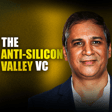
Fighting Air Pollution with Data | Dimitry Trubitsyn @ Airvoice
In this episode of The Spotlight, we delve into the world of air quality innovation with Dmitry, the visionary founder of Airvoice. This episode offers a fascinating glimpse into the transformative solutions Airvoice is pioneering to address air quality challenges in urban environments.
Dmitry shares his personal journey and how his experiences have shaped his passion for creating healthier indoor environments. He describes the "smell of freedom" he associates with his work and how it has influenced his decision to make this country his home for the next few years.
Listen to this episode as Dmitry, explains Airvoice's cutting-edge products, including advanced air filtration systems and indoor air quality monitors, designed to enhance both air quality and energy efficiency in buildings.



















